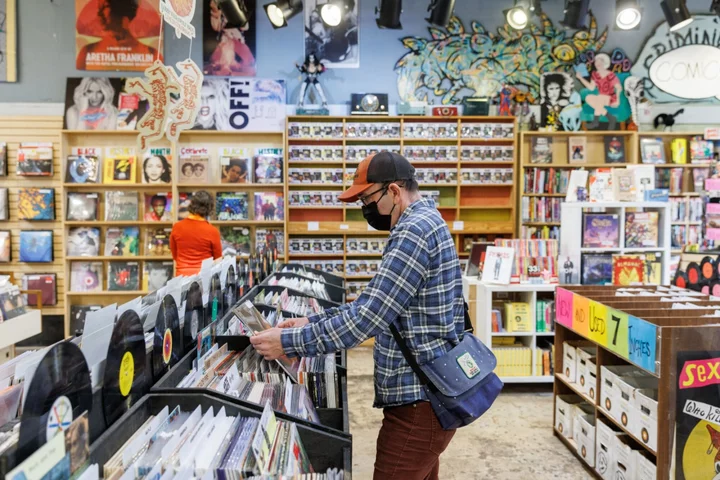US retail sales rose in July by more than forecast, highlighting how the resilience of consumers is helping to power the economy forward.
The value of retail purchases increased 0.7% in July after upward revisions in the prior two months, Commerce Department data showed Tuesday. The figures aren’t adjusted for inflation.
Treasury yields rose, while stock index futures slid and the dollar gained. Swaps traders lifted slightly the probability of another Federal Reserve interest-rate increase this year, to just over 50%.
Sales increased in nine of 13 retail categories last month, including sporting goods stores, clothing outlets and restaurants and bars.
The latest figures illustrate how a strong labor market paired with rising wages is giving many Americans the wherewithal to spend on a variety of goods and services. Consumers remain a key support to the US economy, so far buttressing it against recession in the face of high interest rates.
Sales at nonstore retailers, which includes e-commerce, jumped 1.9%, the most this year and boosted by Amazon.com Inc.’s Prime Day event. The company said the first day of the two-day July event was its single-largest sales day ever.
Earlier Tuesday, Home Depot Inc. announced earnings that exceeded the average analyst estimate. Comparable sales, while down, fell by less than forecast. Consumer giants like Target Corp. and Walmart Inc. will report their earnings later this week.
The figures largely reflect spending on goods, rather than services, limiting the takeaways of this particular report. That said, this report suggests consumer demand for several merchandise categories remains firm, especially once adjusted for the decline in goods prices seen last month.
Restaurant Receipts
Sales at restaurants and bars — the only service-sector category in the report — increased 1.4%. Inflation-adjusted spending on both goods and services will be released later this month.
Receipts at gasoline stations rose 0.4%, in part reflecting higher prices at the pump. Gas prices surged in late July and are now hovering at historically high levels, limiting how much money households have to spend on discretionary purchases.
So-called control group sales — which are used to calculate gross domestic product and exclude food services, auto dealers, building materials stores and gasoline stations — increased 1%, the most since the start of the year. That suggests a strong start to third-quarter consumption.
Looking ahead, the consumer picture is fuzzy. On one hand, rising delinquencies, high debt service costs, the erosion of pandemic-era savings and the resumption of student loan payments are looming threats for the main engine of the economy. Conversely, many Americans are finally seeing their wages rise faster than inflation, strengthening household purchasing power.
--With assistance from Chris Middleton and Liz Capo McCormick.

